Dual PTP Analysis Test
One of the xGenius advantages is the ability to simulate different PTP entities at the same time with multi-port configurations. This note deals with one of these configurations that enables the unit to simulate two PTP slaves at the same time.
BARCELONA, JULY 2024
Testing with xGenius
The ALBEDO xGenius is equipped with advanced synchronization testing capabilities, including support for legacy and packet synchronization technologies. The most important of the latter is the Precision Time Protocol (PTP), which has been successfully used to provide accurate timing for cellular networks, power substations and large factories.
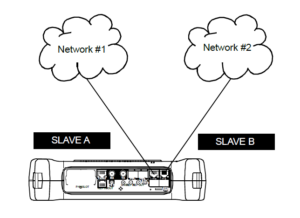
Fig 1. xGenius can simulate two different PTP entities simultaneously
xGenius has the ability to simulate PTP masters and slaves and perform different types of tests to verify the operation of PTP devices deployed in a communication network at different levels, ranging from protocol decoding and capturing to statistics collection and performance analysis. One of the outstanding advantages of this test tool is the ability to simulate different PTP devices simultaneously by taking advantage of multi-port configurations.
This note deals with one of these multi-port configurations, which allows the device to simulate two PTP slaves running on two physically different Ethernet ports at the same time. In xGenius terminology, this mode is known as Dual Sync Analyzer. Users can configure the same or different profiles in each of the test ports, collect statistics from each slave, and obtain timing performance results from each, including time and frequency offset. The obvious benefit of running two PTP tests in one tester is time savings. Using the Dual Sync Analyzer mode, users can perform two tests in the same amount of time it takes to perform a single test in a single-port analyzer. However, there are more subtle and important benefits associated with applications where the correlation between two different PTP references needs to be measured. Two such applications are described here:
- 5G synchronization when coordinated transmission or reception from multiple points such as Multiple Input, Multiple Output (MIMO) is used.
- PTP distribution via the IEC 62439-3 Parallel Redundancy Protocol (PRP), which is important for utility applications.
LTE / 5G Synchronization
Timing in cellular networks, and specifically in networks based on LTE and 5G technology, is required for two different reasons:
- In 5G, there is an inherent need for timing and synchronization to avoid interference between nearby base stations and user equipments (UEs).
- Some services delivered over the cellular network have strict timing requirements. These include positioning, industrial automation or smart grid applications.
Related to the 5G timing requirements, we also have two separate classes. On the one hand, there are the time-division duplexing (TDD) requirements, which for both LTE-TDD and 5G are set at a maximum time offset of 1.5 μs from UTC. On the other hand, there are requirements related to link aggregation, transmission diversity and MIMO.
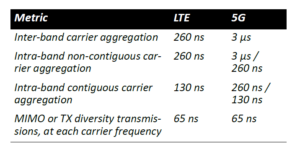
Fig2. LTE and 5G cluster limits in terms of TAE
The common feature of these technologies is that they allow an increase in transmission bandwidth, throughput, or efficiency through the coordinated use of multiple transmitters or receivers. These technologies do not require global (UTC) timing requirements, but there is often a strict limit on the number of related elements belonging to the same cluster. Cluster limits are defined in terms of the relative time offset between members of the same cluster, rather than in comparison to an absolute time reference such as UTC or TAI.
If the time offset of cluster members from UTC is known, we can compute any desired relative metric, but the accuracy of relative time error measurements is often better than for absolute time errors. This means that any result derived from absolute time error will not have the same accuracy as a direct relative measurement. An additional advantage of relative time error results is that they can be obtained without an external reference such as GNSS. Unfortunately, relative time error testing is only possible in a laboratory environment or where the equipment being tested is co-located. However, this is often the case when cluster measurements are required. For this reason, a test tool like xGenius is useful for both lab and field relative time error measurements.
PTP over PRP
The Parallel Redundancy Protocol (PRP) provides fail-safe operation in a LAN by duplicating the transmission media. Each piece of information is transmitted twice over mutually isolated networks (LAN A and LAN B). If one of the replicas is lost, it is very likely that the information will still be received through the alternate channel. Under normal operating conditions, frames are received twice, and Doubly Attached Nodes (DANs) implement a duplicate detection algorithm designed to drop most duplicate frames before they are processed by higher protocol layers.
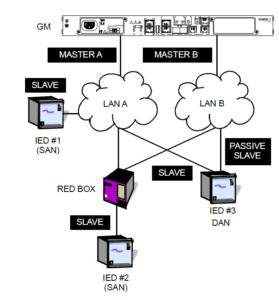
Fig 3. PRP provides redundant communications to IED #2 and #3. IED#1 is sensitive to network faults
The PRP standard is flexible enough to accept interoperability with nodes connected only to LAN A or LAN B. These are called Singly Attached Nodes (SANs). There are no strict requirements for LAN A and LAN B. These are typically bridged Ethernet networks designed so that a failure event on one does not affect the other.
Timing distribution in PRP networks is challenging because timing information is collected from two channels with two delay paths. This fact makes delay compensation infeasible. At some point, the slave could apply compensation derived for LAN A in a Sync packet received on port B. The solution to this problem is addressed in IEC 61850-9-3, the PTP Utility Profile: A DAN operating in PTP Slave mode will keep only one of the ports in SLAVE state while the other remains in PASSIVE SLAVE mode. PASSIVE SLAVE and SLAVE ports are similar, but PASSIVE SLAVE ports do not discipline the oscillator unless an error is detected in the SLAVE port. In this case, the PASSIVE SLAVE port becomes a regular SLAVE port. This ensures consistency between PTP synchronization (Sync message flow) and delay compensation (Peer Delay Request / Response flows).
The ALBEDO xGenius test unit has the ability to perform simultaneous PTP tests of the PRP LAN A and B to verify that the performance limits are met in both the active and passive LAN.
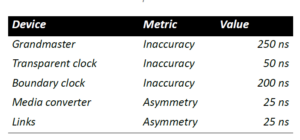
Fig 4. IEC 61850-9-3 performance limits.
According to the IEC 61850-9-3 standard, it should be possible to achieve an end-to-end timing performance of better than 1 μs in the substation network. Relative timing error measurements help network administrators detect timing distortion caused by the GM or by asymmetric delay in the network.
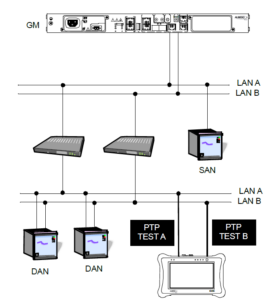
Fig 5. xGenius runs two simultaneous PTP tests and rates the transmission performance of LAN A and B.
PTP performance measurements can be combined with custom backgr xGenius in redundant architectures ound traffic generation. This approach allows users to study how performance degrades as the traffic load increases.


